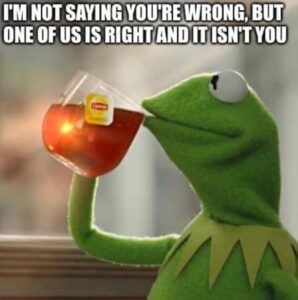 We all make mistakes – lots even – and lots of the time. Sometimes, some of the people who experience an adverse impact by our mistakes don’t let us forget the hurt and harm we caused. In these cases, and even when we aren’t reminded, the aftereffects in our relational conflicts linger in ways that remind us of our vulnerability and of our humanness. And we know we don’t want to repeat the same mistakes again. On a more positive note, it’s good to also remind ourselves that mistakes provide huge learning opportunities that can actually strengthen the relationship. There are, of course, variations and degrees of both of these possible outcomes along this spectrum.
We all make mistakes – lots even – and lots of the time. Sometimes, some of the people who experience an adverse impact by our mistakes don’t let us forget the hurt and harm we caused. In these cases, and even when we aren’t reminded, the aftereffects in our relational conflicts linger in ways that remind us of our vulnerability and of our humanness. And we know we don’t want to repeat the same mistakes again. On a more positive note, it’s good to also remind ourselves that mistakes provide huge learning opportunities that can actually strengthen the relationship. There are, of course, variations and degrees of both of these possible outcomes along this spectrum.
It feels just plain lousy to make mistakes. And the effort to reframe them – to consider that the mistakes we make can teach us lessons – might seem ludicrous when we are still reeling from the fall-out. However, in my role as a conflict management coach and personally, I am aware of the lessons that can evolve. This includes being more cognizant of the other person’s sensibilities, and learning ways to conduct ourselves going forward that enable us to prevent unnecessary conflict and preserve our dignity and that of the other person. This might not only be the next time we are faced with an interpersonal dispute that is similar or a different one.
Where we stand along the spectrum of how we manage our mistakes in interpersonal disputes depends on many variables. These include who the other person is, what caused the upset (what was said or done or not said or done), and so on. In any case, the reality is our mistakes give us a chance to learn about ourselves, the other person and, hopefully, how we can ultimately forget the mistake and remember the lesson.
This week’s Conflict Mastery Quest(ions) blog invites you to consider a mistake you made that resulted in a conflict.
- What was the situation in which you made a mistake? What did you say or do?
- What motivated you to say or do that (your answer to the above question)?
- What was the impact on the other person during that conflict?
- What impact has remained for the other person?
- What about you and your feelings – how might you describe the impact on you at the time? How about now?
- What motivated you to do or say that or those things at the time, as you recall?
- What lingers for you about the other person’s reaction? What else lingers from the mistake?
- What are you realizing the learning point is (or learning points are) that resulted from your mistake in this conflict?
- How might you imbed what you learned as to not repeat the mistake but rather, hold onto the learning?
- What will help you forget what you said or did as a mistake while remembering the lesson?
- What else occurs to you as you consider these questions?
- What insights do you have?
#interpersonalconflict
#conflict
#coaching
#conflictcoaching
#conflictmanagementcoaching
#conflictmanagement
#disputeresolution



 There’s something that often happens when we’re in conflict – our interpersonal disputes often seem to end up being about right and wrong! And by being right we seem to need to make the other person wrong. The conflict might not have started in a way that results in views that are disparate and not mutually acceptable. But, somehow as things escalate the dynamic can become increasingly polarized. Each of us asserts our perspectives in ways that become stronger and stronger and a potentially healthy conflict ends up only about right and wrong.
There’s something that often happens when we’re in conflict – our interpersonal disputes often seem to end up being about right and wrong! And by being right we seem to need to make the other person wrong. The conflict might not have started in a way that results in views that are disparate and not mutually acceptable. But, somehow as things escalate the dynamic can become increasingly polarized. Each of us asserts our perspectives in ways that become stronger and stronger and a potentially healthy conflict ends up only about right and wrong. It’s not the first time this blog has written about a common reaction to being in conflict – looking behind us at what happened or didn’t happen, wishing we had said or done something differently, continually blaming ourselves or the other person for things we cannot take back and so on. There are so many reasons for this.
It’s not the first time this blog has written about a common reaction to being in conflict – looking behind us at what happened or didn’t happen, wishing we had said or done something differently, continually blaming ourselves or the other person for things we cannot take back and so on. There are so many reasons for this.